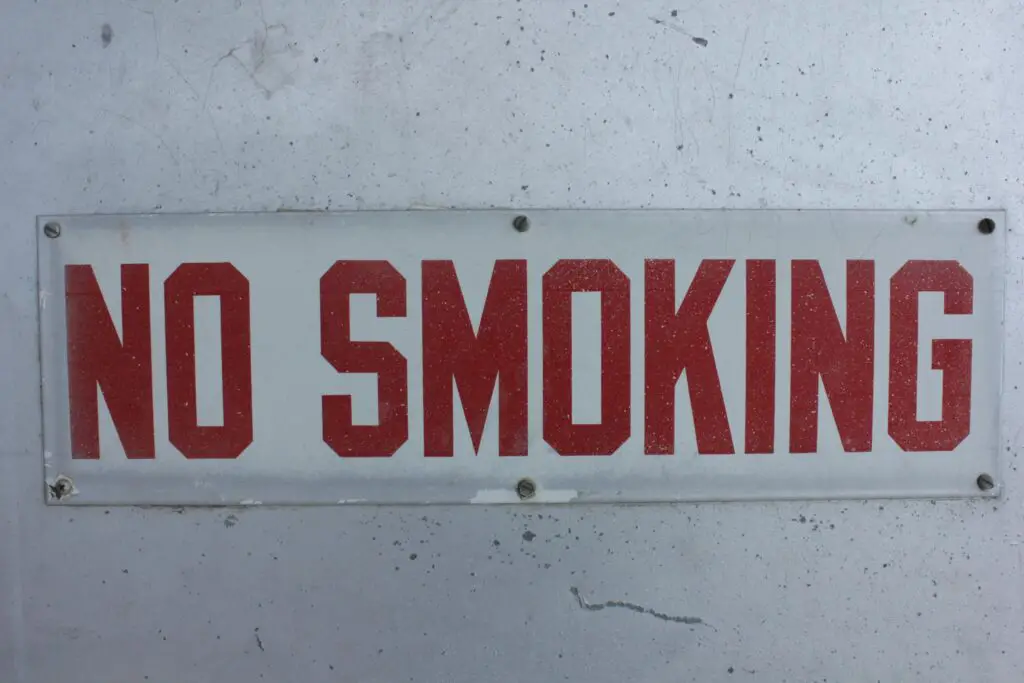1. “The Crying Indian” (1971)

Remember the iconic image of a Native American man shedding a single tear in a PSA about littering? The ad was meant to raise awareness about pollution, but it left many viewers feeling more uncomfortable than inspired. The man, played by actor Iron Eyes Cody, was portrayed as a symbol of environmental devastation. However, the ad’s somber tone, paired with the guilt-laden music, had a more haunting effect than a hopeful one. While it sought to call for cleaner streets, it made people feel like they were personally responsible for ruining nature shares CNN.
What made it truly unsettling was how the emotional appeal seemed to overshadow the actual message. Instead of feeling motivated to pick up trash, viewers were left feeling disturbed and helpless. The use of the stoic man and his tear made it feel like nature was scolding them, and, to this day, it’s remembered less for its positive message and more for the unsettling emotional pull. Sometimes, guilt doesn’t always lead to action, especially when it comes with a side of discomfort adds NBC News.
2. “I Learned It By Watching You!” (1987)

This PSA from the Partnership for a Drug-Free America hit home in an intense way. It showed a teenager confronting their parent about drug use, with the famous line, “I learned it by watching you!” The raw emotion in the kid’s voice made this commercial unnervingly real, highlighting how children’s behavior is often modeled after their parents’. The whole scene felt like a confrontation in your own living room, with the parent caught in a trap of their own behavior shares Rolling Stone.
The problem? It didn’t exactly offer solutions; it just created a sense of dread. Parents were left questioning whether they were sending the right message, while teens were hit with an unsettling realization that their parents’ actions were directly influencing them. The message about drug use was powerful, but the emotional intensity of the commercial often left viewers feeling more anxious than informed adds Mental Floss.
3. “This Is Your Brain on Drugs” (1987)

The imagery of an egg sizzling in a pan as it was described as “your brain on drugs” became an infamous symbol in the war on drugs. While the message was clear, the visual made it feel more like a horror movie than a public service announcement. Watching an egg fry under the intense heat was a stark metaphor for the damage drugs could do to your brain, but it felt more like a shock tactic than an educational message.
For many, the straightforwardness of the ad was both disturbing and hard to shake off. The powerful visuals were designed to get your attention, but they often crossed the line between informative and downright terrifying. Instead of offering solutions or encouraging discussions, the ad made people feel like they were staring at the consequences of bad choices without much room for redemption.
4. “Dare to Keep Kids Off Drugs” (1986)

D.A.R.E. (Drug Abuse Resistance Education) might have had good intentions, but its approach to drug prevention left many feeling uneasy. The program’s commercials, filled with ominous music and scare tactics, painted a grim picture of the consequences of drug use. While well-meaning, the ads often relied on fear to deliver their message, which left young viewers frightened rather than empowered.
The “Just Say No” slogan became synonymous with dread, and the pressure of avoiding peer influence seemed almost insurmountable. The idea was to show kids that drugs were bad, but the way it was done felt more like a warning sign rather than a positive guide to making better decisions. Instead of fostering open dialogue, it created a sense of anxiety about even the possibility of encountering drugs.
5. “The More You Know” Series (1989-2000s)

NBC’s “The More You Know” series became a staple of public service announcements, but some of the ads took on a seriously dark tone. The campaign was aimed at tackling a range of social issues, from drug use to child abuse. While informative, certain PSAs, like the ones addressing sexual abuse or alcoholism, were downright disturbing, often leaving a sense of unease in their wake.
The visual style—grainy and dark, with heavy-handed narration—often made the topics feel even more ominous. The message behind the PSAs was important, but the delivery sometimes felt so intense that it overshadowed the educational aspect. Instead of feeling empowered with knowledge, viewers often felt anxious about the severity of the problems being addressed.
6. “Help Stop Teenage Suicide” (1990s)

A PSA from the ’90s aimed at stopping teenage suicide remains one of the most haunting public service ads ever aired. It featured images of seemingly happy teenagers before abruptly cutting to black, with the words “A message from the American Foundation for Suicide Prevention.” The stark contrast between cheerful faces and the grim subject matter left viewers feeling unsettled.
The ad’s quiet, almost eerie nature, coupled with its deeply emotional message, often created more fear than helpful insight. While its purpose was to raise awareness about a serious issue, the emotional weight of the PSA left many people feeling anxious and unsure of how to cope with such a heavy topic. It was a stark reminder that some issues are too serious to tackle with just an image and a quick message.
7. “Don’t Drink and Drive” (1970s)

One of the earliest “Don’t Drink and Drive” PSAs featured images of horrific car crashes and grave, haunting narrations. The visuals were graphic for the time and left viewers feeling as though they were witnessing the aftermath of a deadly crash up close. While the message was clear—drinking and driving is dangerous—the gruesome imagery made it feel more like a warning than a call to responsible behavior.
Rather than focusing on the reasons behind why people should avoid drinking and driving, the ad relied heavily on fear tactics, which left people feeling more scared than educated. The unsettling visuals were designed to stick with viewers, but they often created a sense of dread rather than empowering individuals to make safer choices. This kind of shock approach made it hard for many people to see the broader, more constructive message behind it.
8. “Don’t Talk to Strangers” (1970s-1980s)

The “Don’t Talk to Strangers” campaign, aimed at teaching children safety, is another one that terrified parents and kids alike. The ad often featured ominous, cloaked figures trying to lure kids away from safe environments, with a very serious warning about the dangers of talking to strangers. While the intentions were good, the creepy, almost sinister tone of the ads created fear rather than providing helpful safety advice.
The portrayal of strangers as almost cartoonishly evil figures made it seem as though the world was full of lurking dangers, ready to pounce at any moment. Instead of simply teaching kids to be cautious, the campaign left many feeling distrustful and scared of the world around them. It was an attempt to protect, but it ended up creating a climate of fear that wasn’t necessarily productive.
9. “Mouth Cancer” (1980s)

In an attempt to dissuade people from smoking, one particularly jarring PSA focused on the gruesome consequences of oral cancer. The ad featured close-up images of severely disfigured individuals, their mouths ravaged by the effects of smoking. The horror of seeing real people with these devastating results was meant to shock viewers into quitting, but it often had the opposite effect.
Rather than feeling empowered to quit, many viewers were left horrified and unsure of what to do with the information. The rawness of the visuals was almost too much to process, and instead of using it as a teachable moment, it felt more like a gruesome warning. This shock tactic might have gotten attention, but it also left people feeling deeply uncomfortable and often alienated.
10. “Smokey the Bear” (1944-1980s)

While Smokey the Bear is one of the most iconic mascots of the “Only You Can Prevent Forest Fires” campaign, some of the older ads took a rather intense approach. Smokey’s serious tone and the increasingly dire warnings about the consequences of forest fires left viewers with a sense of impending doom. The looming presence of the bear, with his deep voice warning of “catastrophic destruction,” made wildfires seem like an ever-present danger.
Instead of feeling empowered to help prevent fires, people were often left feeling like an accidental mistake could lead to a catastrophic event. The pressure to “do your part” in preventing fires felt overwhelming, especially when paired with visuals of massive, destructive blazes. Smokey’s stern warnings were certainly effective but could be terrifying for those not familiar with fire safety protocols.
11. “The Smoking Baby” (2000s)

A PSA about the dangers of smoking featured an unsettling image of a baby with a cigarette hanging from its mouth. The bizarre and unsettling image was meant to shock viewers into considering the consequences of smoking around children, but the surreal, almost nightmarish quality of the ad made it feel more like a bad dream than an informative PSA. The sight of an infant with a cigarette, no matter how exaggerated, was just too much for many viewers to stomach.
While it did get the message across, the visual was so disturbing that it often left viewers unable to focus on the actual content. It made people uncomfortable in a way that undermined the message, instead creating confusion and unnecessary fear. The discomfort of seeing a baby smoking overshadowed the actual point of the PSA, leaving people with lasting feelings of unease.
